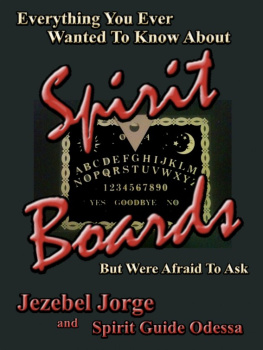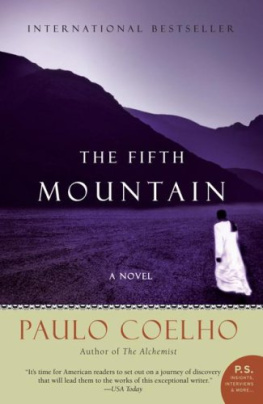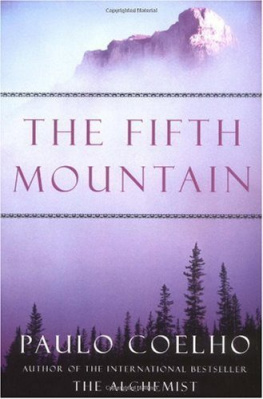I receive commissions on all links to Amazon books in this book .
Chapter 1:
The Characters
The Story First
Many of my readers like to learn about the biblical and historical research behind my novels after theyve read them. The fact behind the fiction. It helps bring context and explains some of the stranger things of the novels to those who are intellectually and spiritually curious. This book is a presentation of the research behind my novel Jezebel: Harlot Queen of Israel . The truth is that the material in this book is so fascinating it can be read on its own by those who hunger as I do to uncover the ancient Near Eastern background of the biblical text.
The novel retells the biblical story centered around Queen Jezebel of Israel that can be found in 1 Kings 16 through 2 Kings 11. Jezebel, a daughter of the king of Tyre, marries King Ahab of Israel in the ninth century B.C. The marriage is a political one for the purposes of uniting in defense against the hostile Aramean kingdom in the north. Despite the pragmatism, king and queen find themselves falling in love.
Tyre, a Phoenician coastal city, is cosmopolitan and Canaanite. So Jezebel brings wealth, sophistication, and culture to a less advanced agrarian Israel. Unfortunately, she also brings the worship of Baal, the storm god of Canaan, and even builds a temple to him in Samaria, the heart of Israel.
Since Israel is supposed to be monotheist in its worship of Yahweh alone, the prophet Elijah the Tishbite and his students at the School of Prophets rise up to condemn Jezebel and call Ahab and Israel back to Yahweh from their spiritual adultery with Baal. This leads to a series of confrontations between the two worldviews that play out in the narrative, the most famous of which is the Mount Carmel episode of calling fire down from heaven.
But Jezebel doesnt give up. She fights back to gain more power and even trains Ahabs sister Athaliah to emulate her ways as future queen down in Judah. Jezebels ruthless ambition forces a climactic battle that jeopardizes an entire family dynasty of kings.
The story of the novel is told through the eyes of Jehu son of Nimshi, who is the commander of the army of Israel. Jehu is a man who struggles with dual loyalty to both God and King. His dilemma becomes more pressing as the king whom Yahweh anointed strays from his God. As Jezebels power grows, Jehu must rise up to do what is right, facing the loss of everything he holds dear, or suffer the damning consequences of doing nothing.
Another unique aspect of the novel is the depiction of the spiritual world. As I will explain in Chapter 2, the novel pulls back the curtain of the unseen realm. It depicts the spiritual principalities and powers that reign behind pagan Gentile nations and how they have influence on the course of history. Baal, Asherah, Molech, and others are not mere myths without bite. They are actual names of demonic powers that are real and have their own agenda.
Though this is obviously speculative, the principle is biblical. This is not simplistic spiritual warfare of demons of lust and gossip clinging to us like bacterial ghosts of influence. This is the bigger picture of higher entities of power ruling over Gentile nations as depicted in Deuteronomy 32:8-10 and Psalm 82. Nevertheless, the storyline of these spiritual powers is intended to reflect the mythology of pagans and how it reflects spiritual reality within a biblical worldview.
Thus, as Jezebel seeks to implant Baal worship in Israel, we see the spiritual entity named Baal and his allies, Astarte, Asherah, Anat, and others maneuver for power in the spiritual territories of Israel and Judah, much like human mobsters might maneuver for power over their regions in a city under their control.
But Yahweh and his archangels have other plans to protect the seed of David from the Seed of the Serpent. That is the basic storyline of the novel Jezebel: Harlot Queen of Israel . Now enjoy learning about the historical and biblical research behind it all.
Jezebel
The story of Jezebel and Elijah is one of the most exciting and iconic narratives in all the Bible. One of the most well-known biblical miracles was Elijahs showdown with Jezebels prophets of Baal on Mount Carmel. Considered the most wicked queen in Israels history, Jezebel has become a symbol for some in the modern church of women who embrace feminism. Feminists have sought to rehabilitate her image by revising it into one of a strong female misunderstood and oppressed by the patriarchy. Some prophecy pundits even believe we are currently reliving her storyline as end times prophecy.
Regardless of what you think of these various reactions, Queen Jezebel and the prophet Elijah remain as relevant to us today as they were 2,900 years ago .
In the novel, I have sought to depict Jezebel fairly and faithfully within her original ancient Near Eastern context. That context included both the volatile world of the divided kingdoms of ninth-century Israel and Judahthe prophet Elijahs people as well as the culturally influential cosmopolitan spirit of PhoeniciaJezebels homeland. My research involved fascinating Bible scholarship, archaeology, and Canaanite mythology that I just had to share with my readers.
Lets start with the queen bee, herself.
One of the first things the reader will notice is that the name of Jezebel in the story is actually Izabel, an anglicized version of her real Sidonian name, Ai-zebul. The Hebrew name change from Izabel to Jezebel is not merely a matter of dialect difference but a form of ancient prophetic insult. Ai-zebul (Izabel) translated most likely meant Where is the Prince? This was the phrase Baal worshippers would utter every harvest as they waited for their crops to arrive. It was symbolized in their myth of Baal, the god of storm and vegetation, being rescued from death in the underworld, who would then bring life back to their fields. Hillel Millgram explains,
This myth, the centerpiece of Canaanite religion, found expression in Canaanite liturgy. During summer, the time of Baals long absence, the worshipers of Baal would go out in procession seeking Baal, chanting: Where is Baal the Conqueror? Where is the Prince, the Lord of the Earth? With the coming of the rains in the autumn, the cry would go up: Baal the Conqueror lives! The Prince of the Earth has revived! By their very names, Ethbaal and his daughter Jezebel proclaim the central beliefs of their religion. Ethbaal (its Phoenician form is Ittobaal) means Baal Exists! It is a proclamation of faith.











